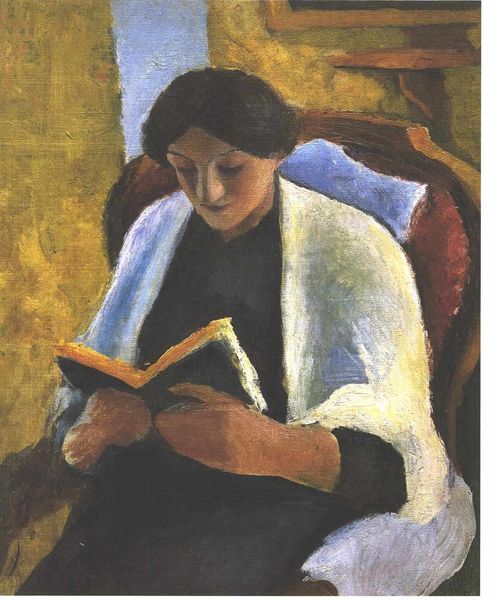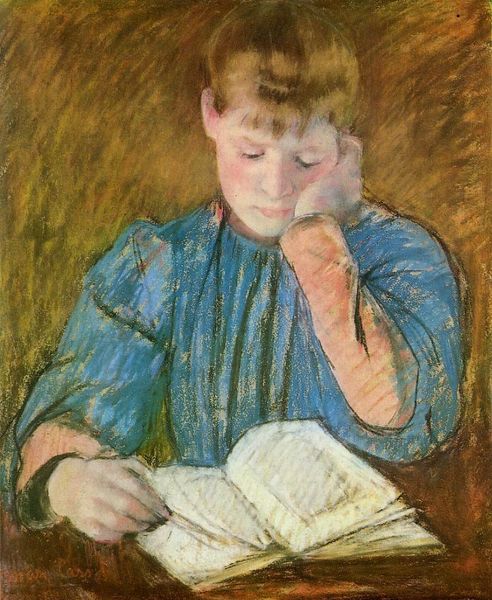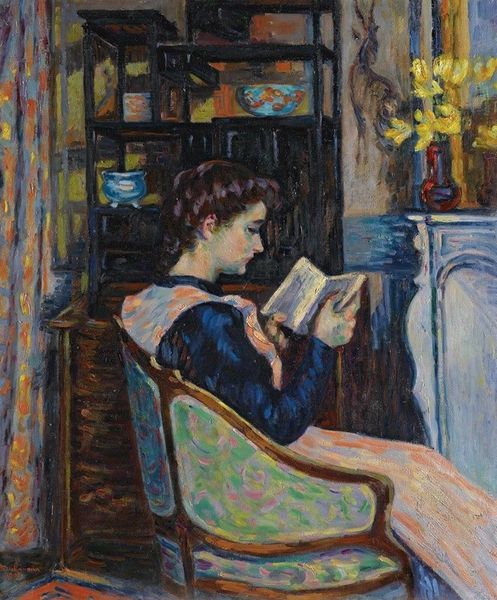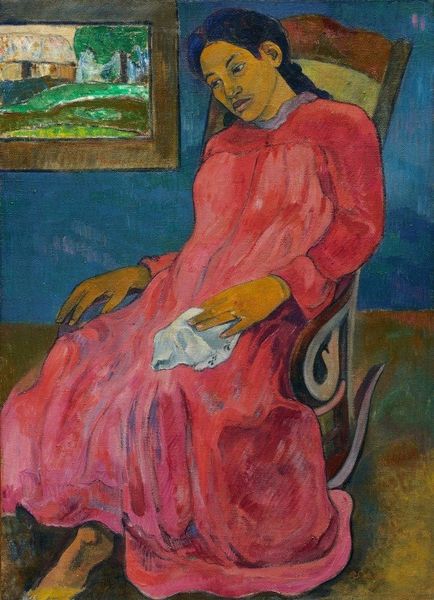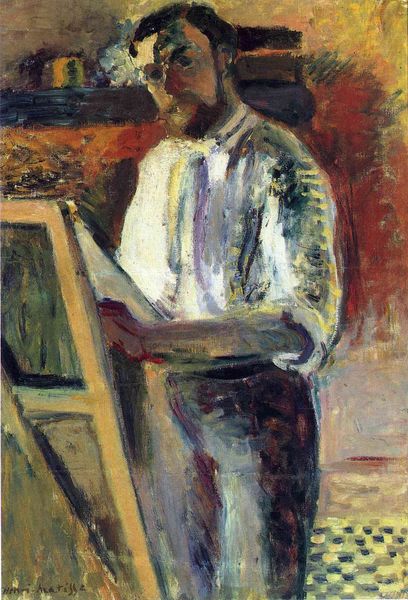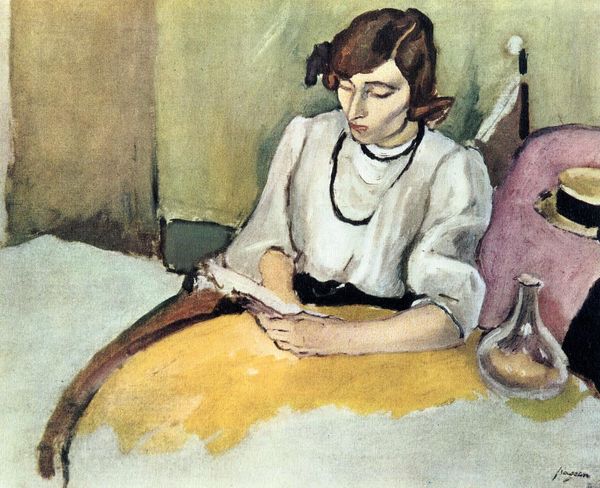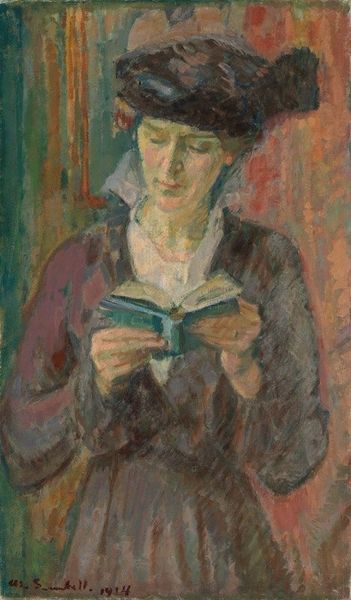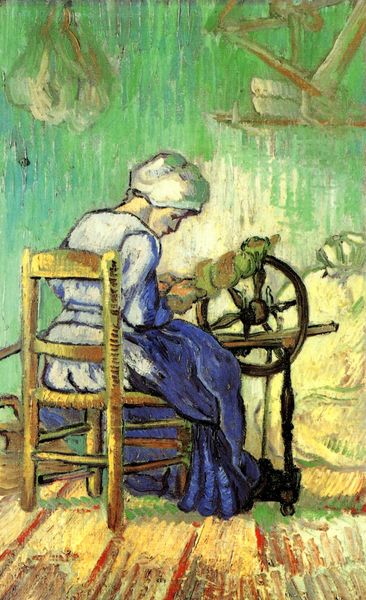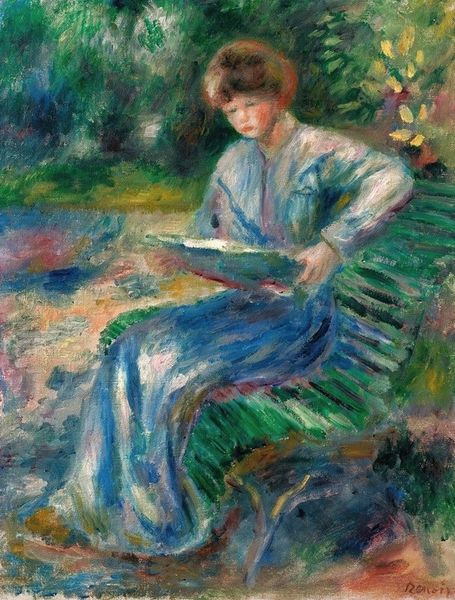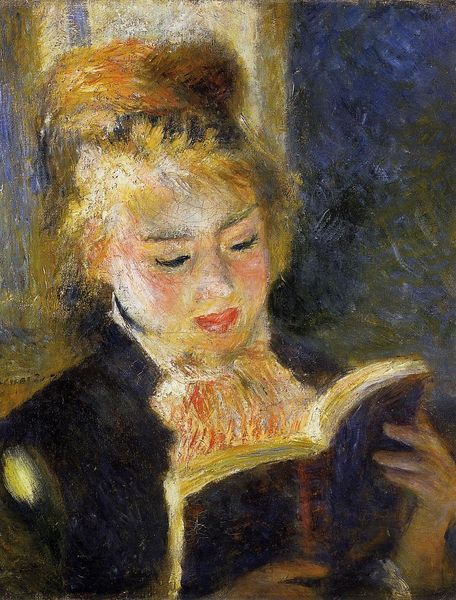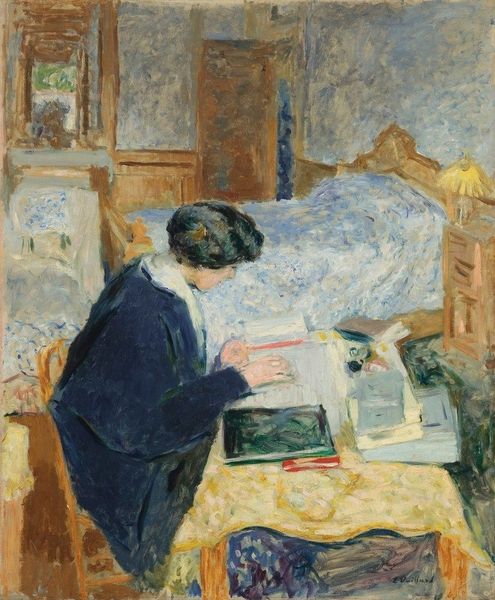
oil-paint
#
portrait
#
impressionism
#
oil-paint
#
oil painting
#
genre-painting
#
post-impressionism
#
portrait art
Dimensions: 73 x 92 cm
Copyright: Public domain
Editor: Here we have Van Gogh's "The Novel Reader," painted in 1888. It's an oil painting, and I find the subject so quietly absorbed, almost lost in the pages. What strikes you most about this work? Curator: What I find compelling is the socio-political implication of leisure, especially for women during this period. Who was afforded the luxury of solitary reading? What kind of narratives were accessible, and what impact did they have? Notice the colours; the yellows and greens seem to almost suffocate the figure. Editor: Suffocate? That's a strong word. I saw them more as... illuminating? Giving a kind of interior glow. Curator: Perhaps. But consider the role of women at the time. Confined by societal expectations, access to literature, even seemingly harmless novels, could represent a radical act. That the painting offers this compressed visual space might be suggestive of repressed agency, don’t you think? It calls into question whether reading can truly be an act of liberation within a structure of constraint. Editor: That’s fascinating. So, you’re saying the very act of reading, even the colours used, are loaded with the politics of gender and class? Curator: Exactly. Art provides insight into culture; by understanding social dynamics, art provides historical context. So yes. The painting's beauty and intimacy invite us to look beneath the surface, encouraging to question, for instance, who the author was of the work this person is reading, and how *that* conditions her sense of self. Editor: I never considered the layers of meaning embedded within such a simple scene. I will not look at art the same way again. Curator: Precisely. The surface is always political.
Comments
No comments
Be the first to comment and join the conversation on the ultimate creative platform.
